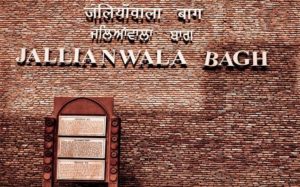On the 13th April of 1919, one of the worst events in the history of freedom struggle unfolded when British Brig-Gen Dyer fired continuously at a mob gathered in Jallianwala Bagh in Amristar in the Indian state of Punjab. British sources mentioned that Jallianwala Bagh massacre left 379 dead and more than 1200 mortally wounded.

The Jallianwala Bagh isn’t a garden or park, but just an unused, irregularly-shaped rectangular ground which is about 200 yards wide and 250 yards long. Houses constructed with their back walls to the area had covered it on three sides. The fourth side comprises a boundary that is about 5 feet high, with several lanes narrow lanes that were used as exits. As General Dyer couldn’t get his armored cars through these intricate, narrow lanes, Dyer decided to employ his troops, 25 on either side of him and charged the mob on foot. Today, the site has been converted into a memorial that holds immense national significance in the memory of those who were brutally killed by the British forces on that fatal day in history.
The land which has a total area of 6.5 acres was acquired by the nation in 1920, converted into a memorial which was finally inaugurated by the first President of free India Dr. Rajendra Prasad in 1961. Some of the highlights of the Jallianwala Bagh memorial include Eternal Flame of Liberty, a lamp burning to pay tribute to the martyrs that is found at the entrance; a pylon having stone lanterns on four sides situated at the centre of a shallow tank in the garden; the Martyr’s well in which tens and thousands of men and women jumped in order to save their lives (now covered with a roof and walls); gallery which displays portraits of freedom fighters and several other historically significant events and historical evidences, and finally the bullet-laden walls—all symbolizing the great struggle for Indian Independence.

